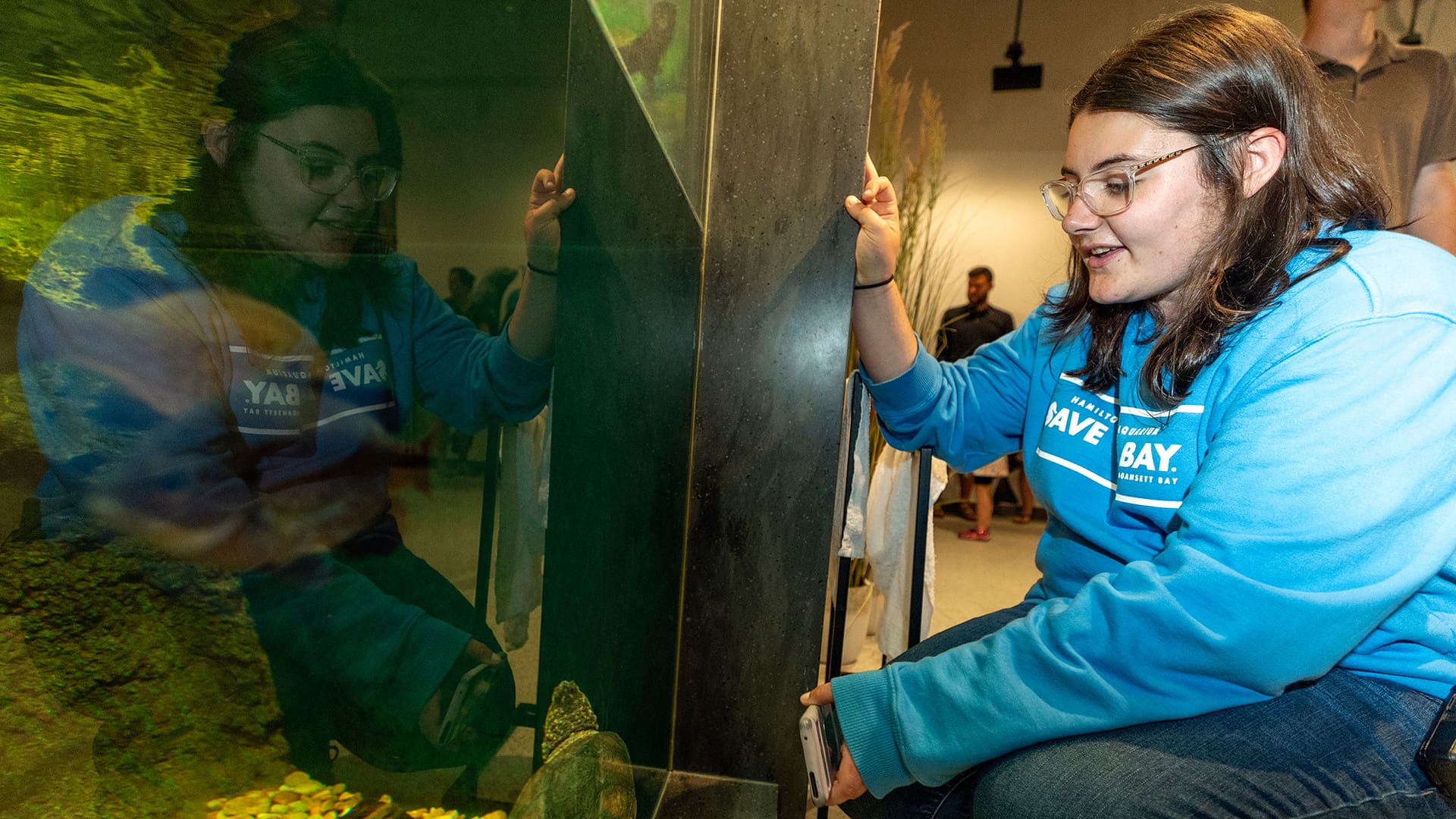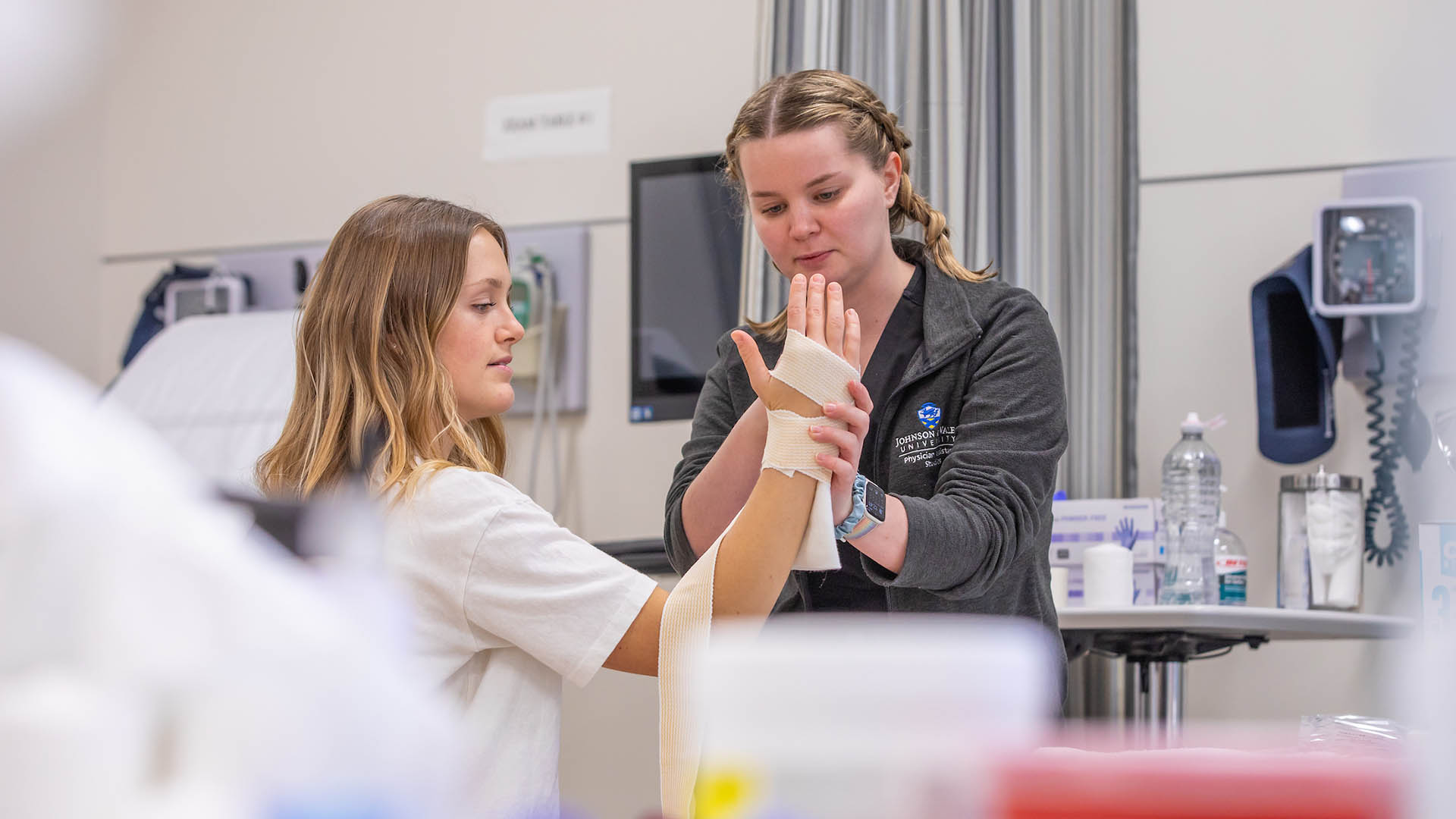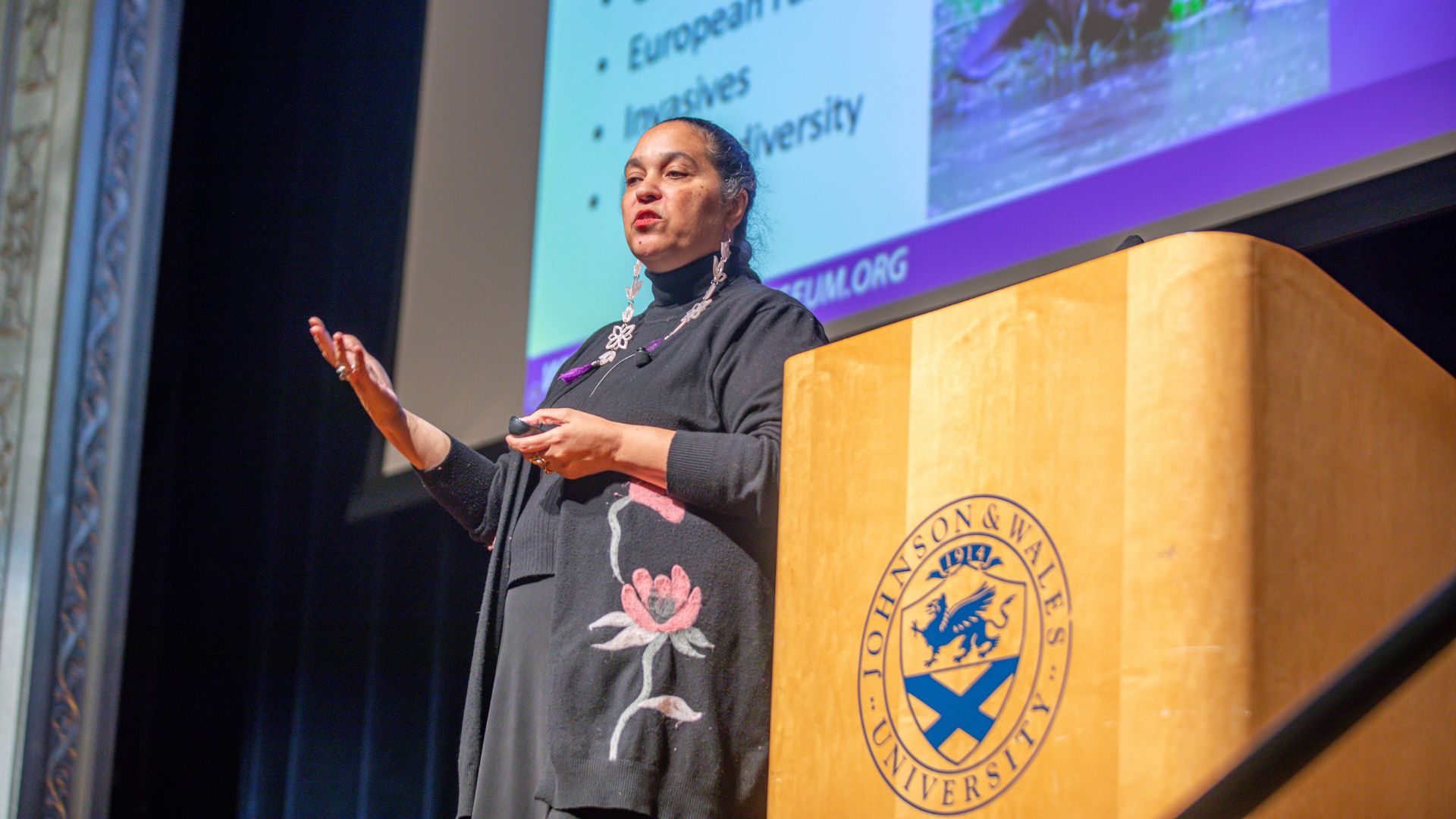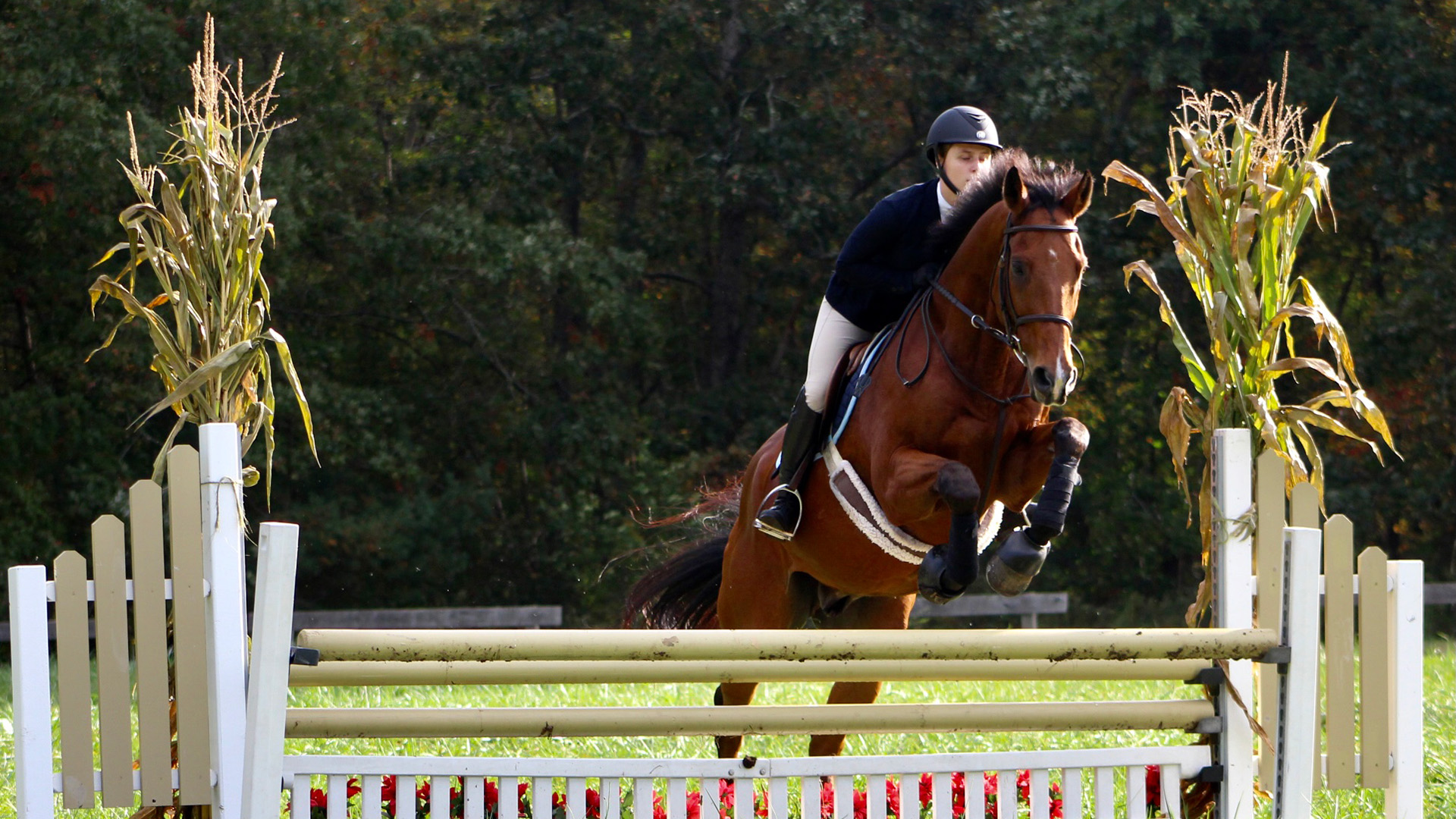Biology Students Learn through Research
Each year, 25% of the world’s crop production is lost to pre-harvest pests and pathogens. Most farmers use copper-based chemicals to control plant pathogens, but these chemicals have detrimental impacts on the environment. What if farmers could produce crops that can grow without the need for chemical pathogen controls and insecticides?
And what if JWU students and faculty could help modify crops to thrive without help of these chemicals?
Professor Christos Dimos created a project for selected JWU Biology students to investigate plant-pathogen interactions in order to develop disease-resistant crops that are less dependent on environment-harming chemicals.
During the 2021-22 academic year, three Biology students — Kimberly Sacaza '23, Alex Pedroza '23 and Christine Wong '23 — conducted laboratory research under Dimos’ guidance in the RSCH3810: Undergraduate Laboratory and Field Research course. Students had to apply to be selected for the course, which they didn’t take lightly; all three expressed pride in having been chosen to participate.
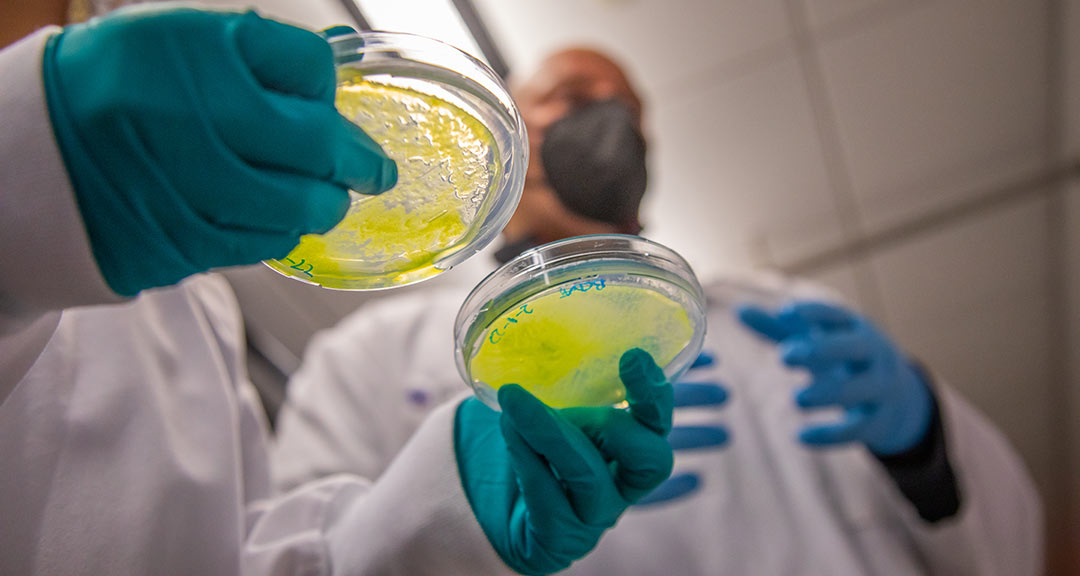
The Research Project Goal
The students were charged with demonstrating that the bacterial plant-pathogen Pectobacterium carotovorum subsp. carotovorum can infect and cause disease in the moss Physcomitrella patens. To figure this out, the students were charged with optimizing the procedures for a cell death assay that would demonstrate if the bacteria causes cell death in the moss — and if so, how much.
Along with other disciplines at JWU, biology intersects with sustainability, in this case due to its applications to the food industry because crop plants’ defensive genes could be engineered to use less water, grow shorter, or meet other conditions in order to more efficiently feed people.
“It was great hands-on experience, and also great to be trusted enough by your instructor that you can do it on your own. I learned a lot of independent skills.”
Demonstrating Cell Death in Moss
While conducting their research, the students used a fluorescent dye, Sytox Green, that will only enter dead cells and which makes their nuclei fluoresce green light. The students then used a fluorescent microscope to view and count the number of dead cells.
Sytox Green has never been used to demonstrate cell death in this moss before, so the students’ goal was to optimize the procedure for using Sytox green to demonstrate cell death in P. patens.
In addition to properly using a fluorescent microscope and other lab equipment, the students had to develop skills in plant tissue culture, aseptic technique, media preparation, bacterial culture, fluorescent microscopy and bacterial enumeration in order to conduct their research.
Phase I: Fall Semester Research
Pedroza set out to study the defensive gene response of moss by growing a bacteria that attacks the moss, then studying its reaction under different conditions. “The moss is very primitive, so a lot of its genes have been passed down to more evolved plants like corn, wheat, sorghum and rice,” Pedroza says. “It’s a great model that we can use, for instance, in growth genes in the moss are directly applied to its descendants, which are the crop plants that we eat every day.”
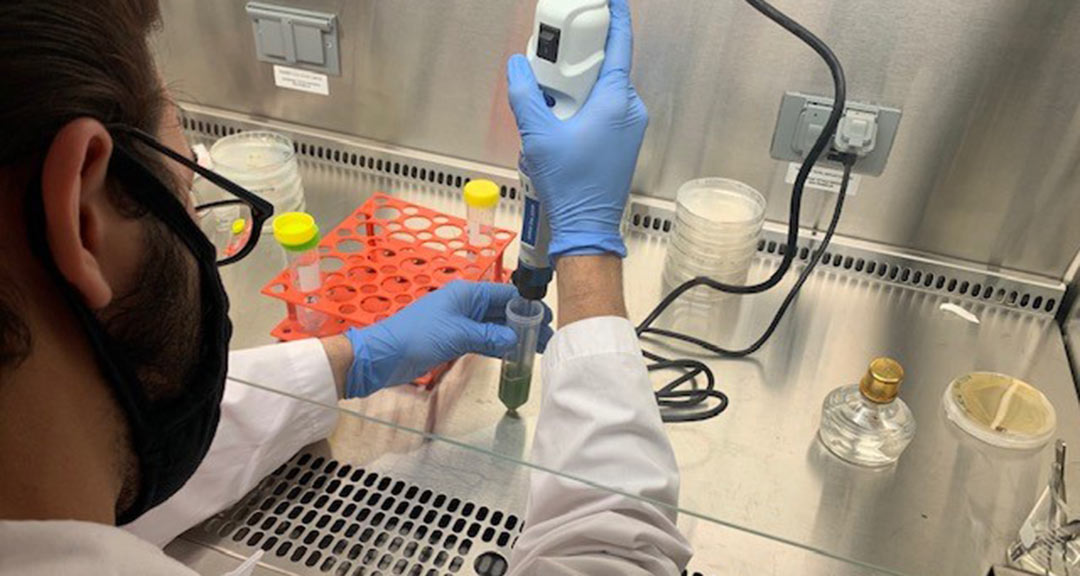
Dimos divided the research project so that for the first 3-4 weeks Dimos did the majority of the research while Pedroza was learning the techniques, and then as Pedroza took on more and more research labor, he learned to conduct most of the research by himself. “The experience was very intense — and also very valuable,” Pedroza says. When Dimos took on a more advisory role, keeping to the background but being available for any questions, Pedroza says he was able to learn by doing.
To address why genes are turned on or expressed in the moss when it’s under attack by bacteria, Pedroza started with simulated attacks and viewed the results under a fluorescent microscope to see what was happening. He would grow moss and bacteria on petri dishes separately, then introduce them to each other in different concentrations. He’d start with adding 10,000 bacterial cells to moss, then a million cells, then 10 million cells, and keep going to see different levels of interactions.
Phase I Complications and Accomplishments
Halfway through the semester, Pedroza hit an unexpected roadblock: the moss samples started dying when they weren’t supposed to. “We had to completely pivot to find out why that happened,” he says.
At the end of the semester, the moss die-off was still an unsolved mystery, but Pedroza enjoyed the challenge of trying to figure out what had gone wrong and reverse it. “We started by looking into the formula of the growth medium we were using to grow the moss, and we came up with a few hypotheses, but we didn’t have time to test them,” says Pedroza. For the sake of time, he and Dimos started using a different growth medium that had different recipes. They found one that worked, which allowed them to continue the experiment as before.
If he hadn’t encountered that curveball, what progress might his research have made? Pedroza would have loved to dig even deeper into the expression of the genes.
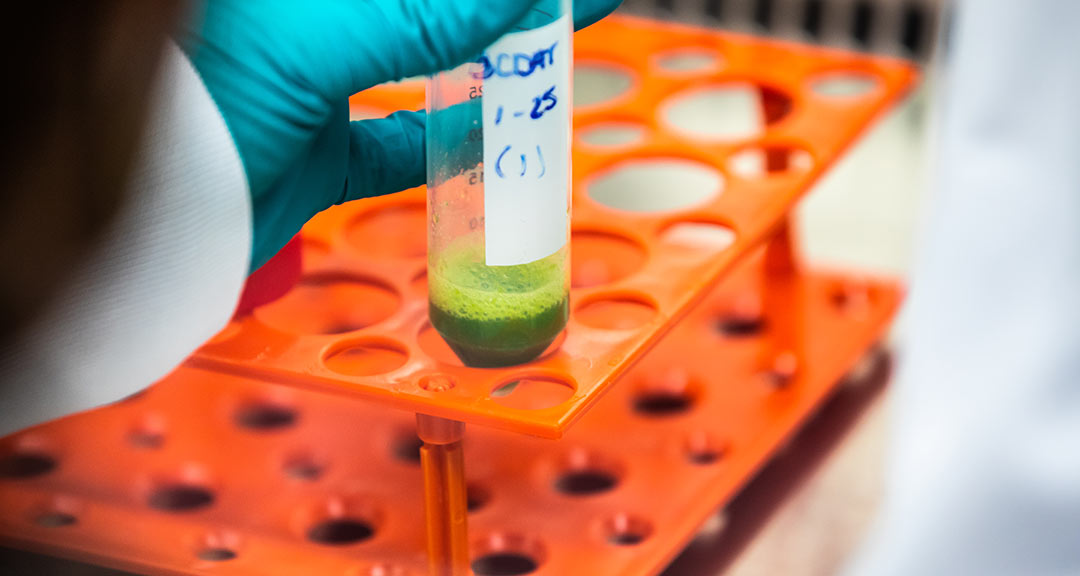
“Under a microscope we can only see what’s obviously visible,” he said, which does not include the proteins that are made or the nearly invisible particles the moss uses to defend itself. “To actually see those, we would have to introduce new techniques like protein acids and histochemical acids.” That would have required different equipment and chemicals to accomplish.
Pedroza is proud of finding a way to grow the moss and the bacteria using in an alt growth medium. “The one originally used was formulated to be able to grow both moss and bacteria nearly perfectly. During the semester I managed to find an alternative medium worked almost as well and was not toxic to either one. It was a great breakthrough!”
Phase II: Spring Semester Research
In the spring, Sacaza and Wong picked up where Pedroza left off, working with P. patens to further study how cells grow and altering the environment to study effects. “This was part of an overarching research into how moss reacts to bacteria that causes soft rot disease (dark spots) in vegetables,” Wong explains. The students worked with Dimos to examine moss growth and finding the medium that worked best for cell growth. The research entailed using different mediums to try and control how moss in order to examine it under a fluorescent microscope. “If it got too big, they would clump together and the cells would be hard to see,” Wong explains.
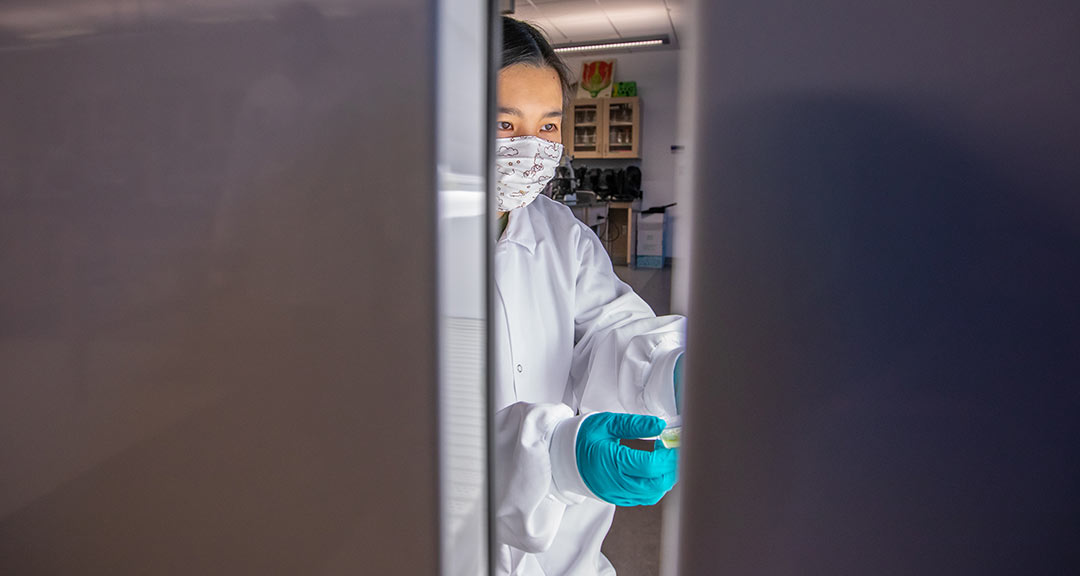
Sacaza found working under JWU’s portable clean hood difficult to get used to; the students had to do most of their preparations of moss and bacteria under the hood to avoid contamination. “We’d have to use pipettes with specific devices to avoid contamination, and we’d constantly have to change the pipettes when using a different medium for each moss so we wouldn’t alter the experimental results,” she explains about how hands-on the research had been. Even something as simple as getting the moss plate into a growth chamber needed extreme measures of care to ensure the plate wouldn’t be slightly open or cracked.
“And all this took place early in the morning,” added Wong. The student researchers were in the lab by 7am twice a week, for two hours at a time, to conduct their research when others weren’t around, and most JWU students aren’t used to not only being out of bed but working with delicate materials at that hour. But she enjoyed seeing how different cells could look under different lights, and she found the research questions fun to tackle. “I also learned to navigate a lot of things using just one hand, like when I had to unscrew a tube while holding a pipette in the other that I couldn’t put down because it would get contaminated. It’s a skill I didn’t expect but has been neat to focus on!”
“It was a lot to be careful about and use critical thinking skills so early in the morning,” Sacaza agrees. She explains that Dimos used a method of “see one, do one, teach one” in order to show research students how to do certain things and then give them a chance to try it themselves. “It was great hands-on experience, and also great to be trusted enough by your instructor that you can do it on your own. I learned a lot of independent skills, but I always felt comfortable enough that if I was confused I could be open enough to ask questions.”
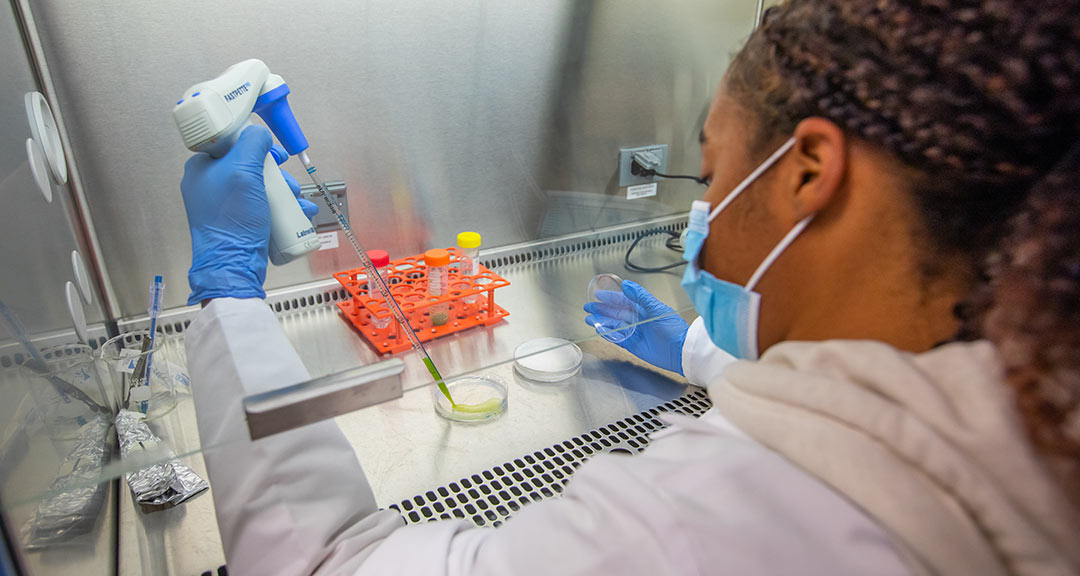
Sacaza also notes that the research project taught her that science can be deceitful. “Don’t trust what you see with your eyes,” she advises. At different magnifications she was able to see what the naked eye couldn’t. She describes one point of the experiment where the nucleus and everything else present in the moss looked normal and healthy. “Under the fluorescent stain, it lit up like Christmas tree, which meant all the cells you were seeing were actually dead,” she says.
“People think of biology as a pre-med path, but there’s so much you can do with your degree beyond practicing medicine. There’s research, there’s genetic counseling and so much more.”
Learning Critical Thinking through the Research Experience
“I definitely gained a deeper knowledge of the moss life cycle, how it grows, develops, because it needed very particular timing of growing it from single cells on petri dishes, harvest at exactly 5 days old for a variety of reasons,” Pedroza said.
He learned valuable fluorescent microscopy techniques, including different filter sets and learning how to use a brand-new fluorescent stain that was just recently released — which meant learning a lot about lab safety due to high-heat acidic conditions and stain being a mutagen.
Looking back on his research project with Dimos, Pedroza thinks about how he needed to be agile enough to pick up on someone else’s work, fully digest and understand the material, and be able to continue the work and also summarize findings for the next researcher who will pick up the project.
“Communication skills are key,” he says. “Research skills such as reading and comprehension are incredibly valuable, too. If you’re going into research, being familiar with academic journals and scientific scholarship will serve you very well.”
Wong considers being able to help figure out the best growing regime for the moss cells as her biggest accomplishment. “Being able to be part of this research was a really good opportunity, especially for someone trying to figure out what to do after graduation,” she says. Although she originally enrolled at JWU on a career path to JWU’s Physician Assistant program, she is exploring opportunities that excite her. “I recently started to consider being a researcher, so this experience was really insightful.”
She advises other students to explore other programs and to get to know JWU faculty, who are there to support and share knowledge. “I wanted to try something new, and JWU’s small class size made that possible,” she says. “Anyone you ask would tell you I’m a quiet person, so just being able to approach a professor like Dimos is extremely helpful!” She adds that another nice thing about being in undergraduate research was having an opportunity to ask questions about research as a career, and she learned a lot from Dimos while in the lab.
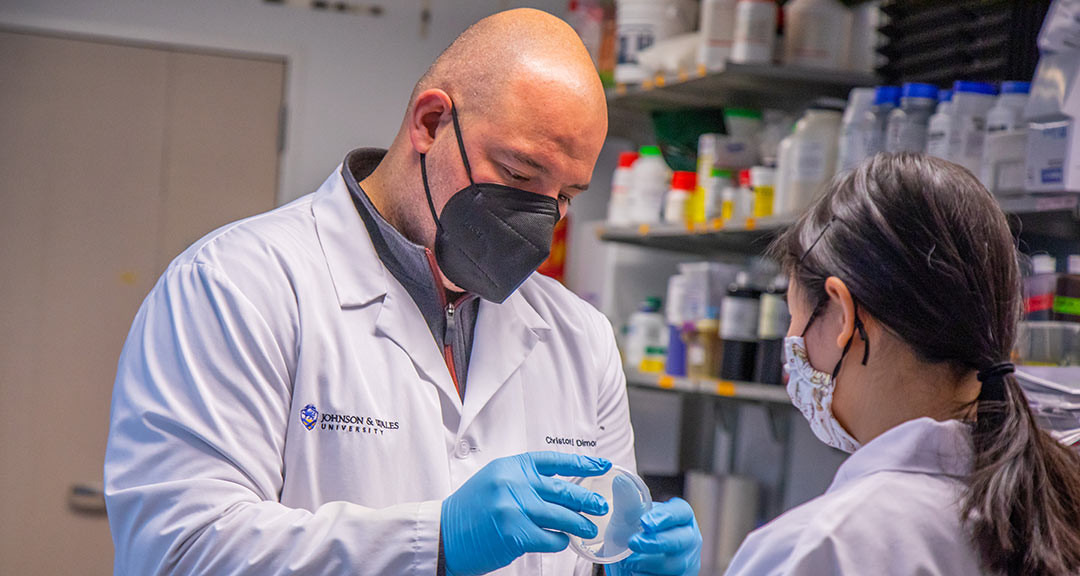
“Because of this course, I got to work with one of JWU’s leading microbiologists and explore different things we could do with our science degree.”
Like Wong, Sacaza similarly came to JWU with a long-term goal of becoming a physician assistant, and she has a specific plan for working in an emergency medicine department at a children’s hospital. She applied for Dimos’ undergraduate research opportunity because medical programs seek students who have done research.
“It shows that you can do a level of critical thinking,” Sacaza says. “Research can sometimes be frustrating, and you need to navigate different approaches to different situations. There’s never an ideal situation when dealing with a patient, so those skills and experience are what employers are looking for.” She hopes to apply her newfound research skills in a lab after obtaining her biology degree to see what it’s like working as a microbiologist or biochemist in a lab.
“Because of this course, I got to work with one of JWU’s leading microbiologists and explore different things we could do with our science degree,” says Sacaza. “People think of biology as a pre-med path, but there’s so much you can do with your degree beyond practicing medicine. There’s research, there’s genetic counseling and so much more. Working alongside of Dimos, I was able to understand more of what it’s like to have a career in research.”
In this video, Sacaza discusses her experience as a Biology student at JWU:
